Bumps On Nipples: 12 Causes, Treatments, And Prevention
From pimples to cysts – there is a wide range of possibilities for this condition.
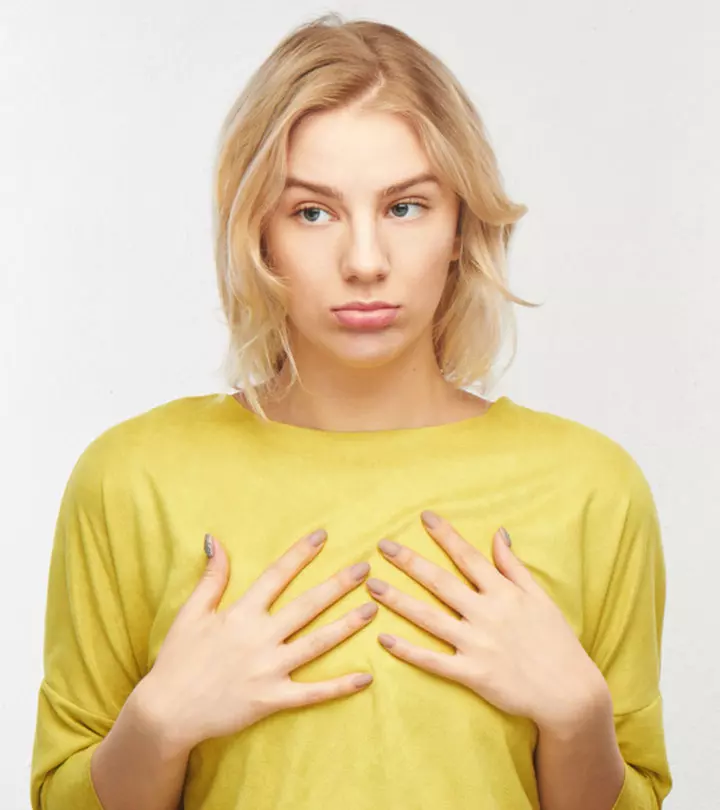
Image: Shutterstock
Have you ever wondered why your nipples have little bumps on them? Don’t be concerned! Fortunately, many changes in your nipples are usually harmless, and many aspects of your nipples – from little bumps to ingrown hair – are natural and nothing to worry about. However, if you are experiencing pain, rashes, abnormal discharge, or other symptoms, you should consult a doctor once.
This article discusses the causes of bumps on nipples, how you can treat them, and much more. Recognizing the causes and significance of these bumps can calm your worries and guide you toward taking action when needed. Keep reading!
In This Article
What Are The Bumps On Your Nipples? Should You Worry? Expert Insights
Daniel Boyer, M.D., says, “They are oil-producing glands on the areola (the darker area of both men’s and women’s breasts) skin surrounding the nipples.” He also adds, “According to the National Health Service (NHS), they are normal occurrences that people should not worry about. However, they may also appear due to certain medical conditions that may require medical attention.”
Do you suspect you may have some medical condition? Look out for the symptoms mentioned in the next section.
Key Takeaways
- Bumps on the nipples are nothing but oil-producing glands on the surrounding skin (the darker part of both men’s and women’s breasts).
- Various factors can cause bumps on the nipples. These include pimples or acne, ingrown hairs, nipple dermatitis, breast cysts, swollen montgomery glands, milk blisters, fibroadenoma, subareolar abscessi Pus-filled lumps on breasts formed due to blockage of small glands or ducts under the areola, causing pain and swelling. , complications from nipple piercings, and breast cancer.
- The majority of nipple bumps are harmless. However, if you have pain, rashes, unusual discharge, or other symptoms, you should see a doctor right away.

Symptoms To Look Out For
- Bumps on the areola
- Bumps on the nipples
- Bumps on the skin around the breast
- Bumps secreting a discharge
- Swelling on and around the bumps
- Flaky or scaly bumps
- Redness
- Areola or nipple rash
A variety of factors can cause bumps on the nipples. Learn more about them in the next section!
Causes Of Bumps On Nipples
Various factors can cause bumps on nipples (or areola):
1. Pimples Or Acne
Sweat, germs, and debris can get stuck in the pores around your nipples, leading to acne or pimples. The pores may swell up as a result of this. The majority of nipple pimples are whiteheads. If you regularly get acne on your nipples or breasts, you may need to step up your hygiene game.
2. Ingrown Hairs
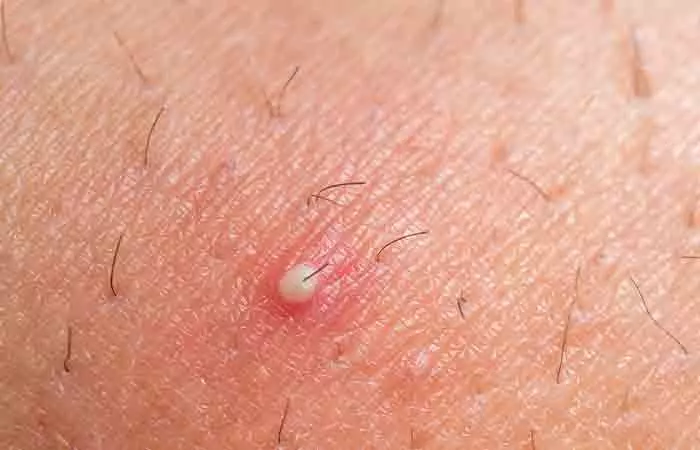
Pimple-like bumps rise up when the hair follicles around the nipple become clogged or when hair starts growing downward or sideways. The majority of ingrown hairs go away independently, but you should monitor them for infection.
3. Nipple Dermatitis
Nipple dermatitis is characterized by itching or pain in one or both nipples. This condition could be caused by eczemai Also known as atopic dermatitis, a general skin condition common in children that causes inflamed, dry, irritated, and itchy skin. (atopic dermatitis), thrush (oral yeast infection), or an allergic reaction (contact dermatitis) (1). Breastfeeding, jogging friction, and other contact irritants – like soaps, cleansers, or chlorine – are common causes of this condition.
4. Breast Cysts
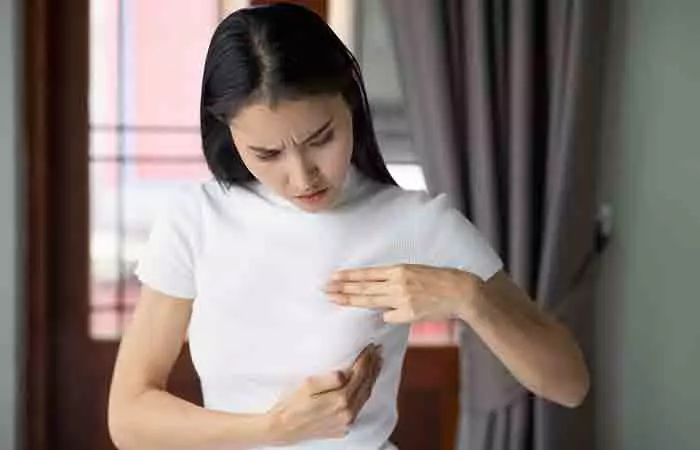
A soft, fluid-filled sac on the breast is referred to as a breast cyst. It may also look like a hard lump under the skin. It forms when fluid fills up an empty milk gland. It may also form spontaneously due to age-related hormonal changes. It is normal to have several cysts (2).
5. Swollen Montgomery Glands
Montgomery glands are tiny, painless bumps on the areola that release an oily material. These glands can sometimes become inflamed, irritated, or infected. They may appear red and swollen when they are irritated. Pushing or squeezing them can cause discomfort or infection. Ointments, bra fabrics, breast pads, soaps, and other products can irritate these glands.
6. Milk Blisters
Milk blisters are white, clear, or yellow bumps on the nipple (3). They last from a few days to weeks. Milk blisters form when the skin grows over a milk duct opening, and the milk backs up behind it, causing inflammation and pain. Milk blisters can be uncomfortable, but they are not dangerous.
 Did You Know?
Did You Know?7. Breast Cancer
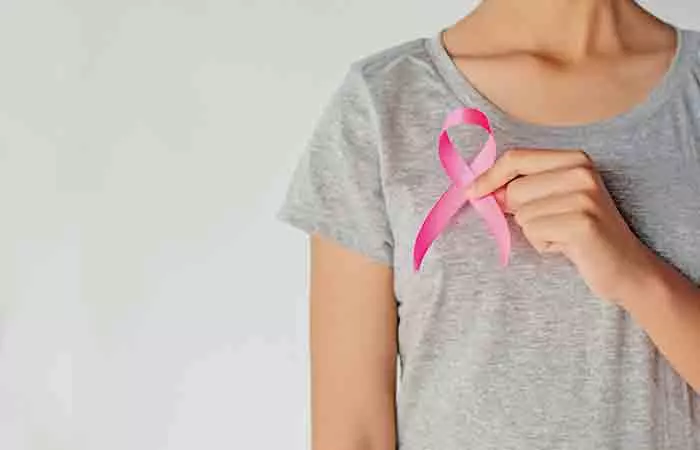
Nipple bumps can be a symptom of breast cancer. You should consult a doctor if your nipple begins to turn inward or starts secreting a discharge (4).
A survey of lead interpreting physicians at ACR-accredited mammography facilities evaluated their choice of imaging modality for assessing nipple discharge. Out of 8,170 distributed surveys, 849 responses were received (10.4% response rate). Results showed that for physiologic discharge, 30% recommended screening mammography, 24% recommended diagnostic mammography only, and 46% recommended both mammography and ultrasound. For pathologic discharge, 91% recommended mammography plus ultrasound, 8.5% recommended mammography only, and less than 1% recommended screening mammography. Variability in modality selection was observed, emphasizing the importance of guideline adherence to minimize unnecessary workups and healthcare costs.
8. Fibroadenoma
A fibroadenoma is a non-cancerous lump in the breast. These smooth, spherical, solid lumps are made up of a mass of fibrous and glandular tissue. Fibroadenomas come in a variety of sizes and can grow or decrease on their own. Breast cancer can occur in conjunction with a fibroadenoma in extremely unusual circumstances (5).
 Trivia
Trivia9. Subareolar Abscess
An infection can cause a subareolar abscessi Pus-filled lumps on breasts formed due to blockage of small glands or ducts under the areola, causing pain and swelling. in the tissue beneath the nipples and areola or the lactiferousi A tube-like structure in the breast that transports milk from the mammary glands to the nipple during lactation. duct getting clogged by keratini A structural protein that is the main component of skin, hair, nails, and the epidermis and provides them with strength, resistance, and protection. . It can appear as a pimple or a lump (6). Redness, swelling, breast tenderness, and discharge are some of its symptoms. A doctor should treat a subareolar abscessi Pus-filled lumps on breasts formed due to blockage of small glands or ducts under the areola, causing pain and swelling. since it can lead to inverted nipples or the creation of a fistulai An abnormal connection between two body parts, like organs, vessels, or other structures, which do not usually connect. if left untreated.
10. Complications From Nipple Piercings
Infections can occur in a nipple piercing, especially if the piercing is new. This can lead to cysts or hematomasi Accumulations of blood outside the blood vessels, typically brought on by trauma or injury, resulting in bruising, redness, and swelling in the affected area. , which are collections of fluid or blood beneath the skin. These can result in nipple bumps.
11. Papilloma
A papilloma is a small, generally non-cancerous growth that may occur on the surface of the nipple or within the breast ducts. While it is typically not a cause for major concern, it may cause nipple discharge, pain, or discomfort (7). Regular breast self-exams and mammograms can help detect and address such conditions early.
12. Herpes
Herpes is a viral infection that can cause sores or blisters on or around the nipples. It’s typically caused by the herpes simplex virus, which can either be HSV-1 or HSV-2. These sores can be painful and may lead to discomfort while breastfeeding. Additionally, those with herpes on their nipples are suggested to avoid breastfeeding to keep the infection from passing onto the baby (8).
Some nipple bumps may be accompanied by swelling, discomfort, and the release of an abnormal discharge. It is best to consult a healthcare professional to determine what type of bumps you have. Read on to learn more about how your doctor can diagnose the condition.
Diagnosis
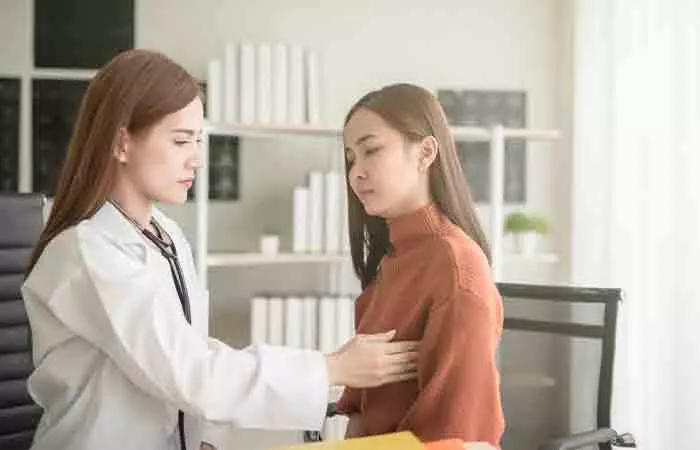
A healthcare expert may check them visually and manually to determine the cause of the bumps on your nipples. The doctor may refer you to a specialist if the bumps require further evaluation. Mammographyi An X-ray imaging method that aids in the early detection of breast cancer by screening for abnormalities in the breast, such as tumors or calcifications. or an ultrasound scan may be performed. Specialists may also conduct some tests on the tissue in the infected area.
Based on the results of the diagnosis, the doctor will proceed with the treatment. Scroll down to the next section to learn more.
Treatments
- Blocked Montgomery glands and ingrown hair may respond effectively to a warm compress.
- Some breastfeeding women may get nipple dermatitis or eczemai Also known as atopic dermatitis, a general skin condition common in children that causes inflamed, dry, irritated, and itchy skin. as the nipples become irritated by the baby’s mouth, tight clothes, or retained moisture. In such circumstances, consulting with a doctor or lactation expert is recommended, as treatments for breastfeeding women may differ from those for non-breastfeeding women.
- It is a good idea to wear garments made of all-natural or moisture-wicking fibers. It allows your skin to breathe while managing moisture. Also, it prevents extra oils and dirt from accumulating and aggravating the bumps on your nipples.
- The doctor may prescribe low-dose antibiotics to help clear acne on nipples.
- Topical antifungal creams can be used to treat bumps caused by a yeast infection. If you are breastfeeding, there is a chance that the baby may have an oral yeast infection, also known as thrush, that they may have passed on to you. Make sure they are both treated at the same time by your pediatrician.
- If you have been diagnosed with breast cancer, a doctor may suggest treatments like chemotherapy or a mastectomyi A surgical procedure done to remove one or two breasts or the tissue around the breasts to prevent or treat breast cancer. .
- Pierced nipples often develop abscesses, which may feel like a bump on the skin. If you have developed one and wondering how to get rid of a piercing bump on your nipple, remember it’s crucial to maintain proper hygiene during the healing period. Clean the area with a saline solution twice daily and avoid touching or twisting the piercing.
- Seek medical assistance if soreness persists or if signs of infection, such as pus or fever, appear.
Most nipple bumps are not a cause for concern. But if you notice some worrying symptoms, you can consult a doctor. Find out when to do so in the next section.
When Should You See A Doctor?
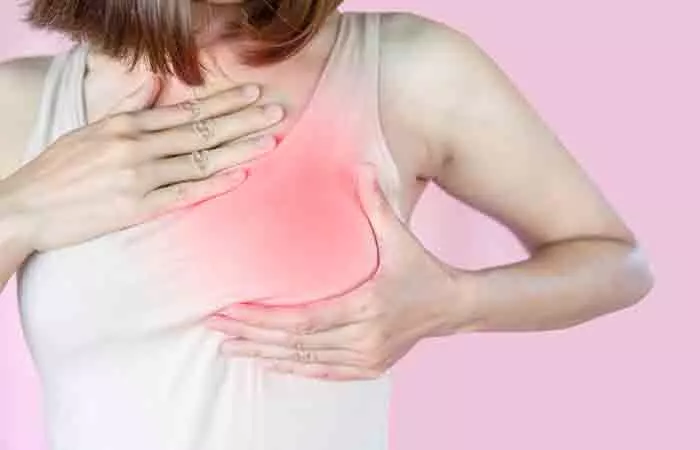
You should see a doctor if you have any of the following symptoms:
- Any unusual changes in your breasts and nipples, including new bumps.
- If at-home treatments do not relieve the pain.
- Red bumps that are warm to the touch and accompanied by fever.
- Nipple pain.
- Swelling
- Flaky or scaly skin.
- A sudden rash on and around the areola or nipple.
- Irritation and discomfort.
- Burning sensation.
- Any form of discharge.
We’ve included some tips and suggestions in the following section to help you prevent possible bumps. Continue scrolling.
Prevention Tips
- Maintain a proper skin care regimen. Wash your nipples and breasts with a mild cleanser daily and dry them completely before getting dressed.
- To keep your nipples supple and prevent bumps, apply a fragrance-free moisturizer.
- Avoid tight-fitting clothes/bras that keep your nipples moist. Opt for breathable materials, like cotton, which help wick away moisture and minimize skin irritation from friction.
- If you are pregnant, keep changing your breastfeeding positions to ensure that the milk ducts are completely emptied.
- Wipe off sweat immediately.
- Avoid using chemical and artificial skin care products on the breasts.
- Pay special attention to any dry skin on the nipples. Use an exfolianti A substance that helps to enhance skin texture, clear clogged pores, and encourage skin renewal by removing dead skin cells from the skin's surface. to remove the dead skin cells.
Do men get the same type of nipple bumps as women? Continue reading to find out!
Men Vs. Women – Bumps On Nipple Comparison
Both men and women can get bumps on their nipples and chest/breasts. Breastfeeding, wearing a bra, and hormonal changes are additional causes of these bumps for women.
Men can develop nipple bumps like acne and ingrown hair as well. Men can also get breast cancer. So, anyone with an unexplained and uncomfortable bump on or near their nipple should see a doctor for a diagnosis.
Daniel Boyer says, “The same causes of bumps on the nipples apply to both men and women, apart from nipple bumps caused due to pregnancy in women.”
Infographic: 10 Prominent Causes Of Bumps On Areolas And Nipples
While bumps or pimples on your nipples or areolas can be concerning, understanding their causes can help you determine the right course of treatment. In the infographic below, we have listed the common causes of these bumps. Take a look.
Some thing wrong with infographic shortcode. please verify shortcode syntaxBumps on the nipples are the oil-producing glands on the areola that develop due to ingrown hair, acne, or milk blisters. Sometimes, they may signify an underlying medical condition such as breast cancer or infection. You can try home remedies such as warm compresses or ointments for relief. Consult your doctor if the bump is accompanied by pus, swelling, or pain. Depending on the cause, they may prescribe ointments or other treatments for the bumps. In addition, following tips such as maintaining personal hygiene and a skin care routine can prevent bumps.
Frequently Asked Questions
Why are the bumps on my areola big?
The bumps on your areola (or Montgomery glands) turn big when you get aroused or are pregnant.
Do Montgomery tubercles go away?
Yes, it is normal for Montgomery glands to shrink and disappear after pregnancy and breastfeeding.
Do Montgomery glands appear before periods?
Hormonal changes in the body may cause your Montgomery glands to enlarge. Hence, this enlargement may be observed during pregnancy, at the onset of puberty, or during or prior to one’s menstrual cycle (periods).
Illustration: Bumps On Areola And Nipples: Causes, Diagnosis, And Treatment
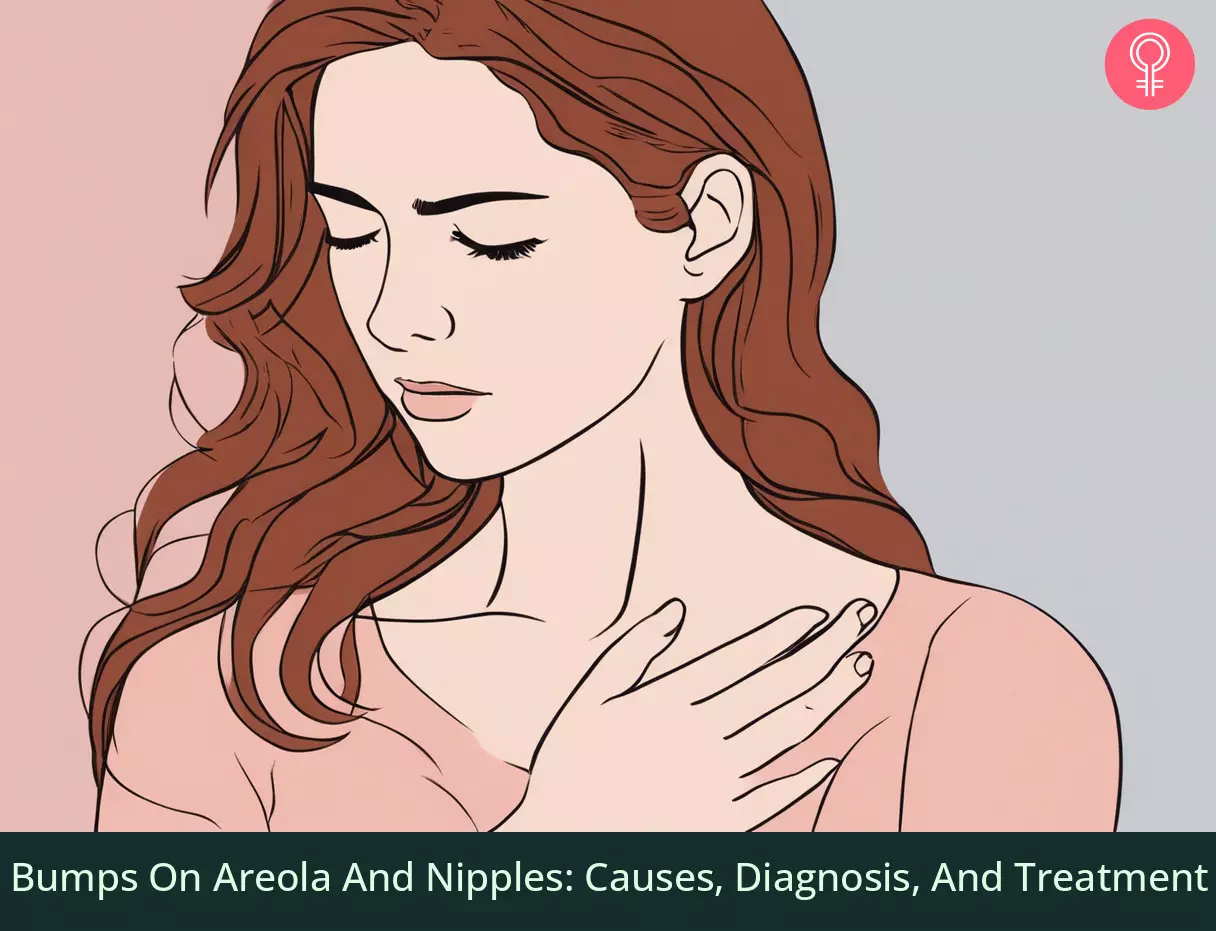
Image: Stable Diffusion/StyleCraze Design Team
Learn about the causes of and treatments for nipple bumps on your areola. Watch the video to get the facts and find out what’s the best solution best for you.
References
Articles on StyleCraze are backed by verified information from peer-reviewed and academic research papers, reputed organizations, research institutions, and medical associations to ensure accuracy and relevance. Read our editorial policy to learn more.
- Nipple Eczema: A Diagnostic Challenge of Allergic Contact Dermatitis
https://www.ncbi.nlm.nih.gov/labs/pmc/articles/PMC4069662/ - Breast Cyst
https://www.ncbi.nlm.nih.gov/books/NBK562196/ - Case Report of the Management of Milk Blebs
https://pubmed.ncbi.nlm.nih.gov/34762834/ - Nipple Discharge: An Early Warning Sign of Breast Cancer
https://www.ncbi.nlm.nih.gov/labs/pmc/articles/PMC3506094/ - Breast Fibroadenoma
https://www.ncbi.nlm.nih.gov/books/NBK535345/ - Chronic recurrent subareolar abscess formation
https://pubmed.ncbi.nlm.nih.gov/6541414/ - Intraductal Papilloma
https://www.ncbi.nlm.nih.gov/books/NBK519539/# - Herpes simplex of the nipple: infant-to-mother transmission
https://pubmed.ncbi.nlm.nih.gov/2923026/#
Read full bio of Dr. Sravya Tipirneni
Read full bio of Monomita Chakraborty
Read full bio of Anjali Sayee
Read full bio of Swathi E





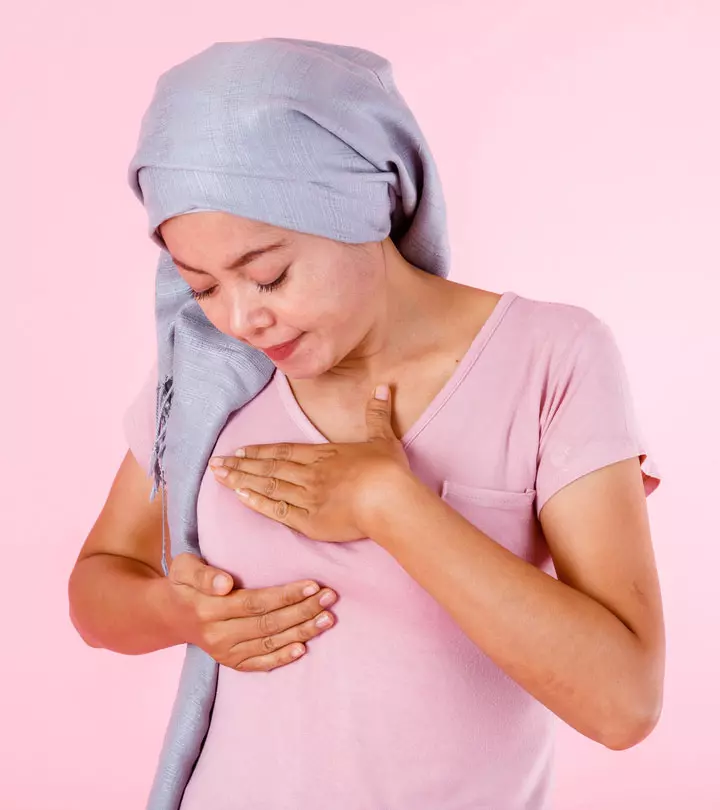
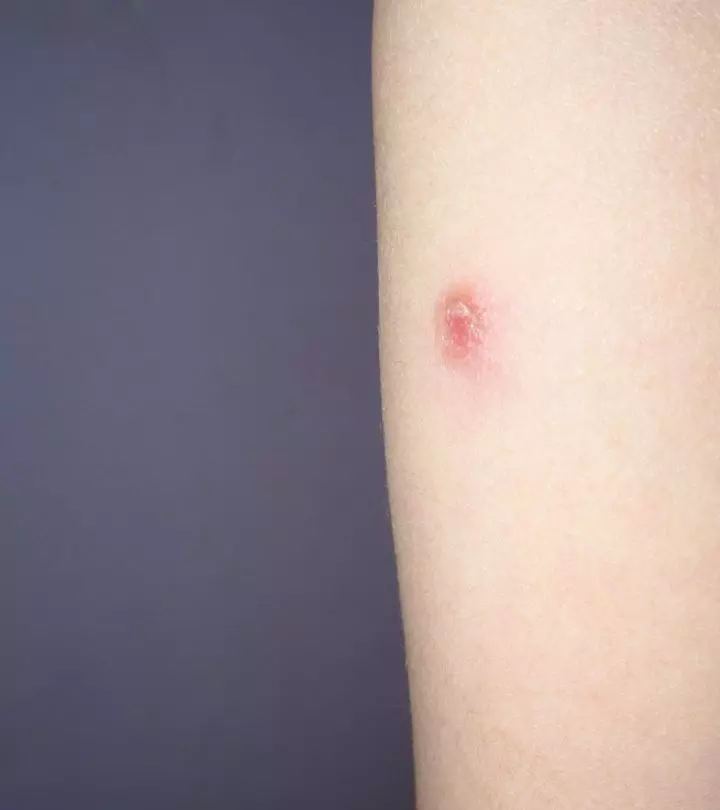
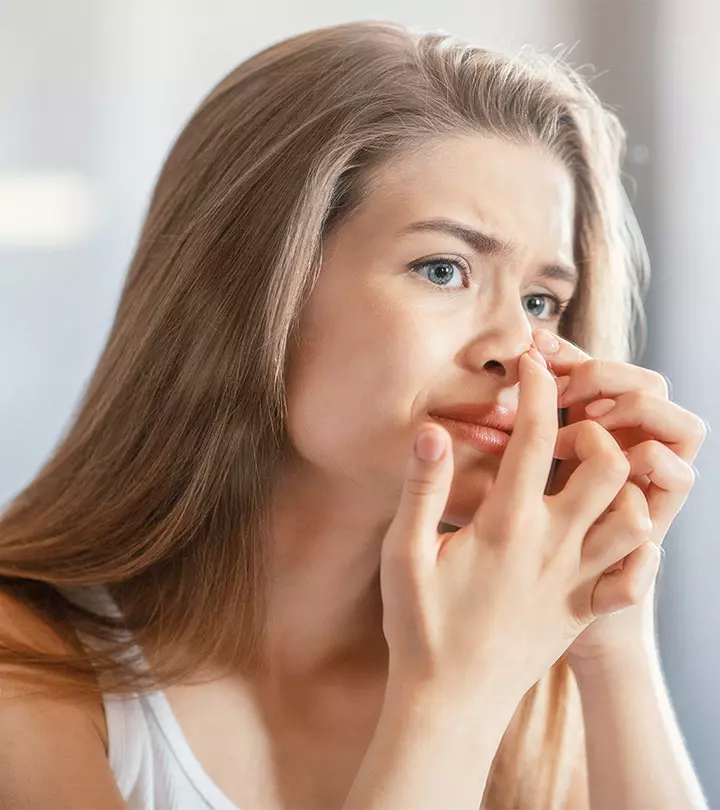
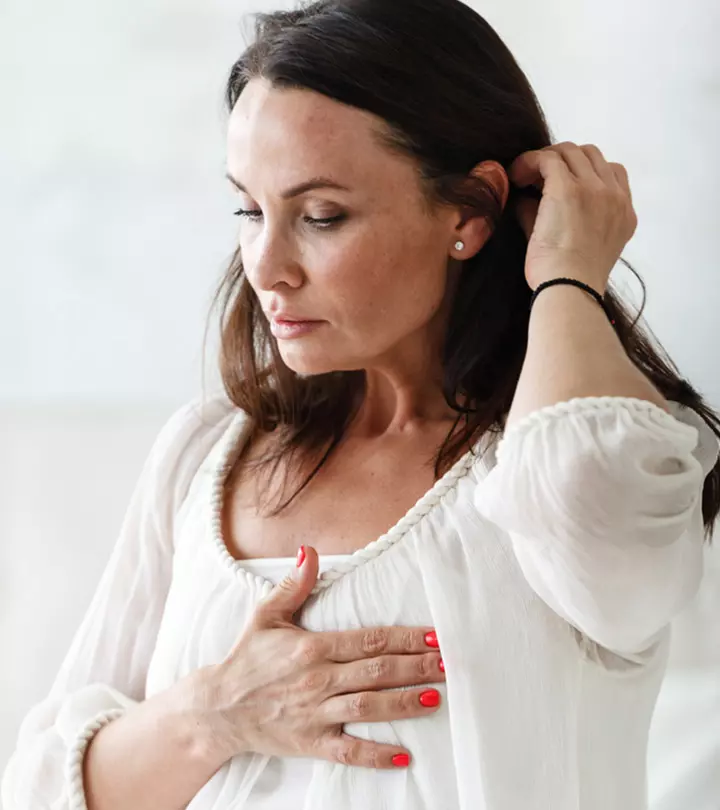
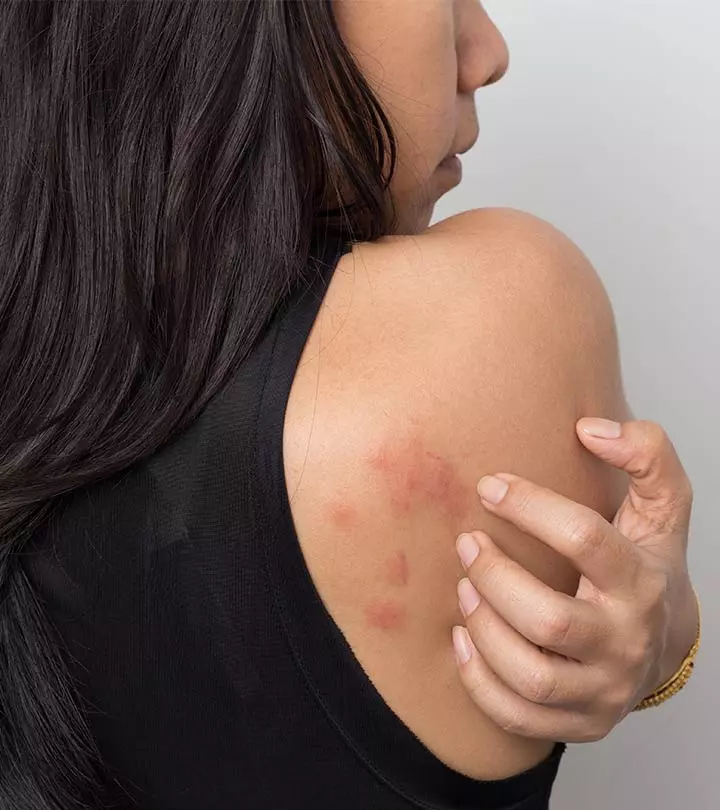

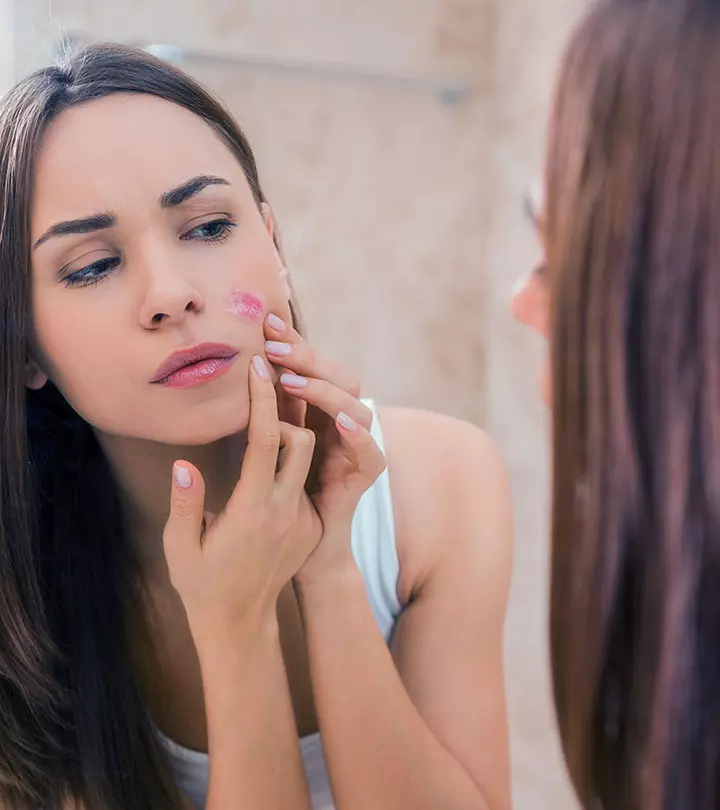
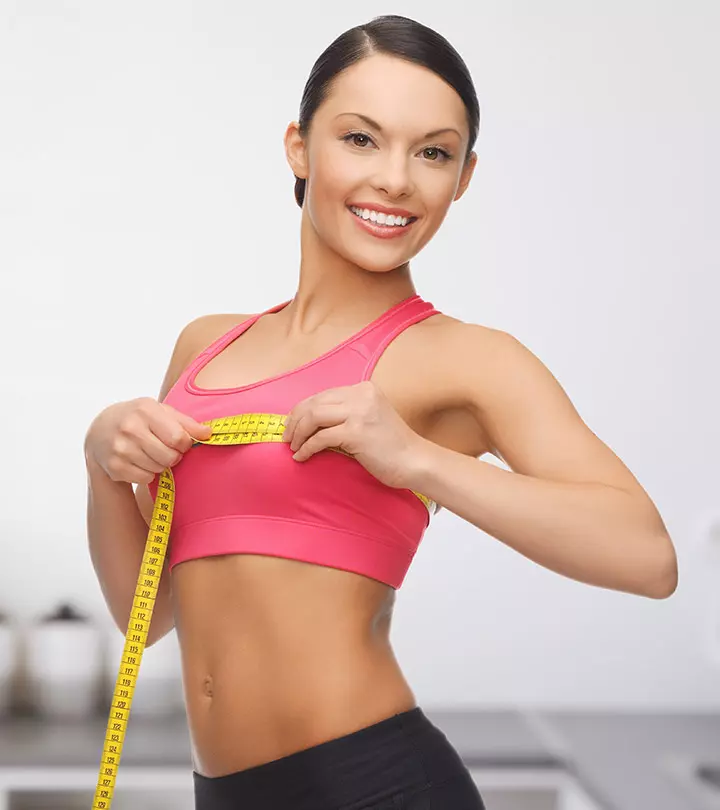
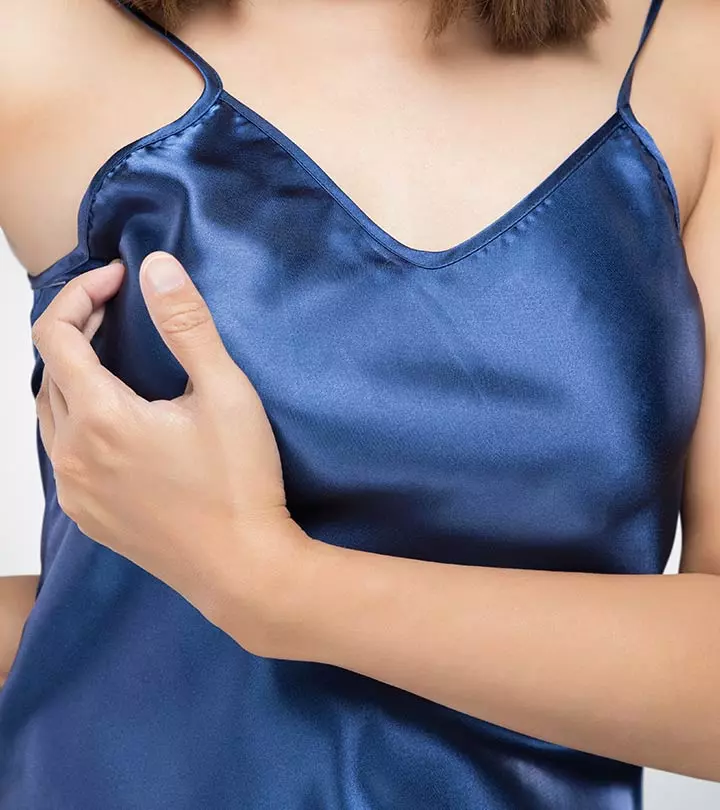
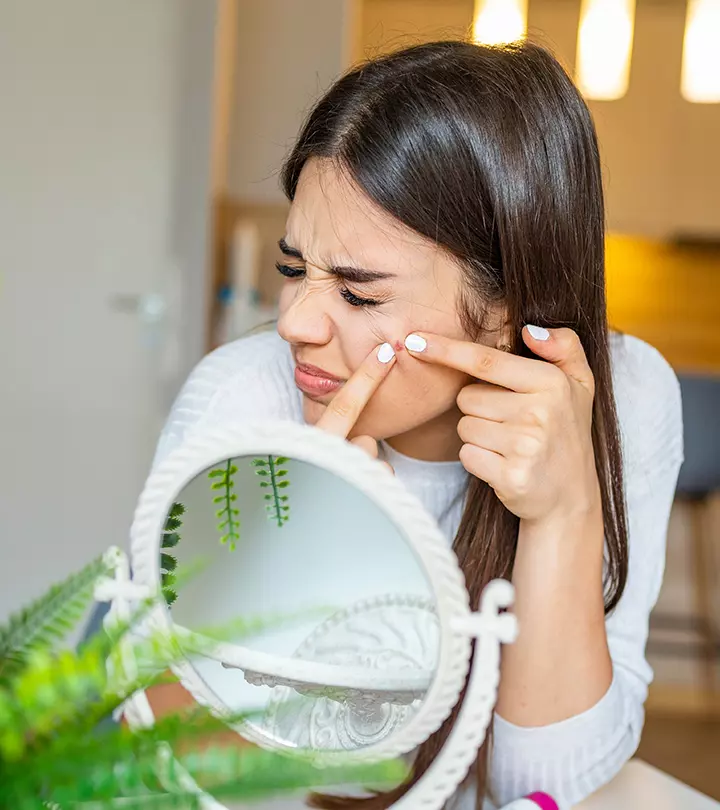
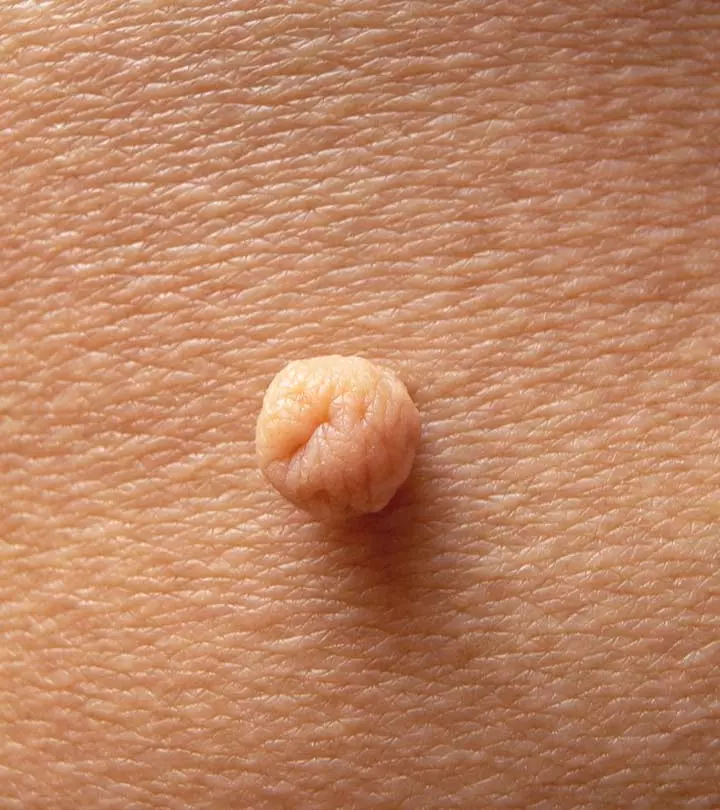
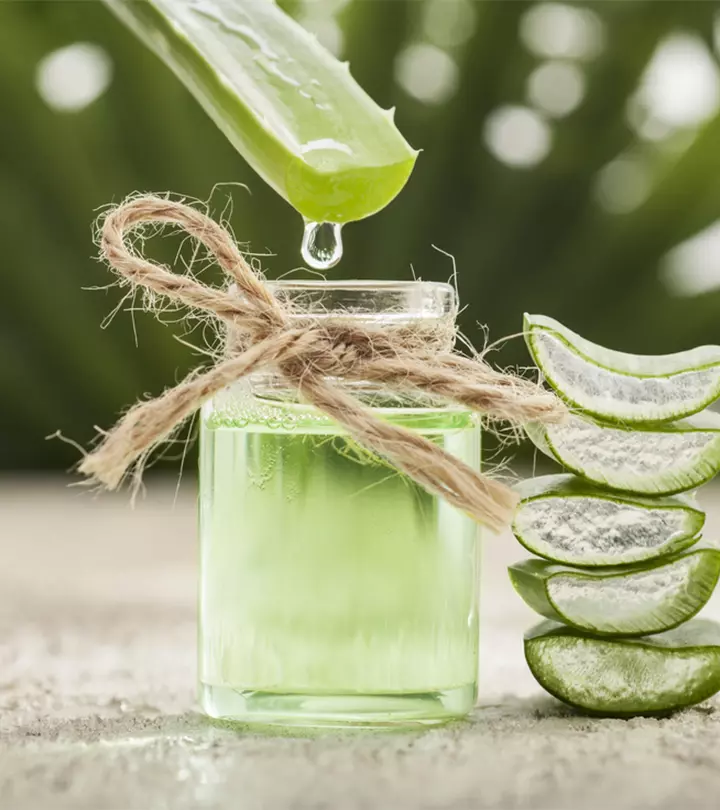

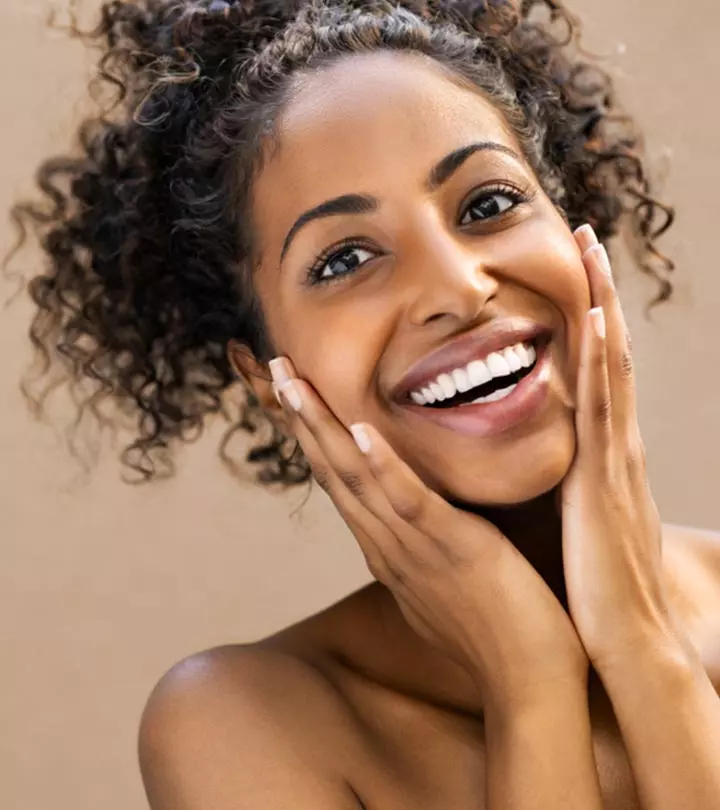
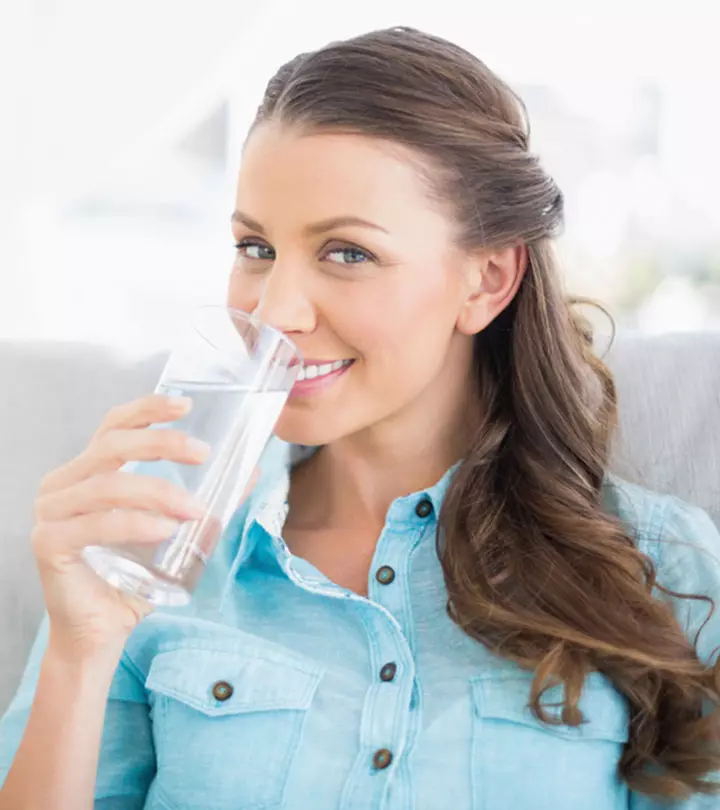
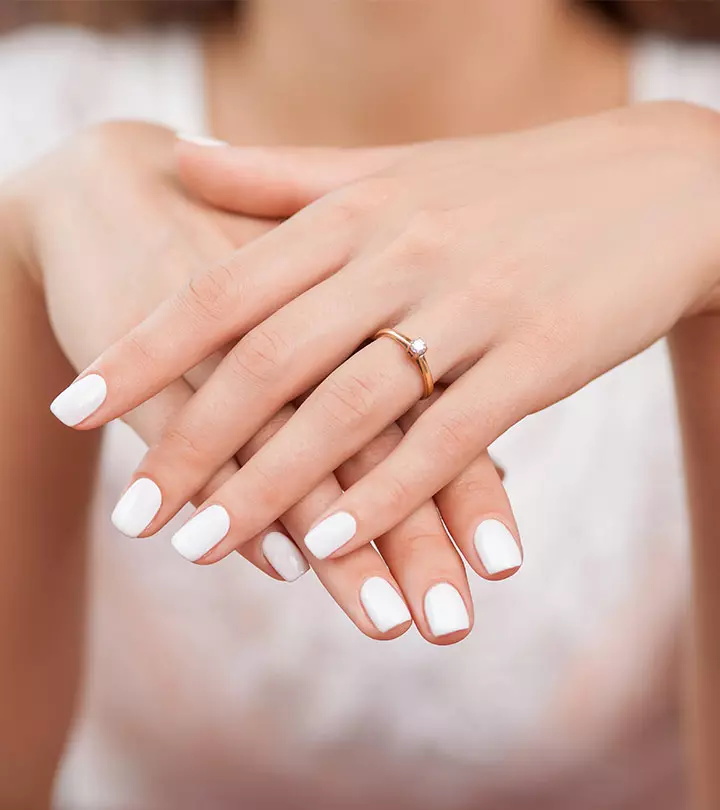
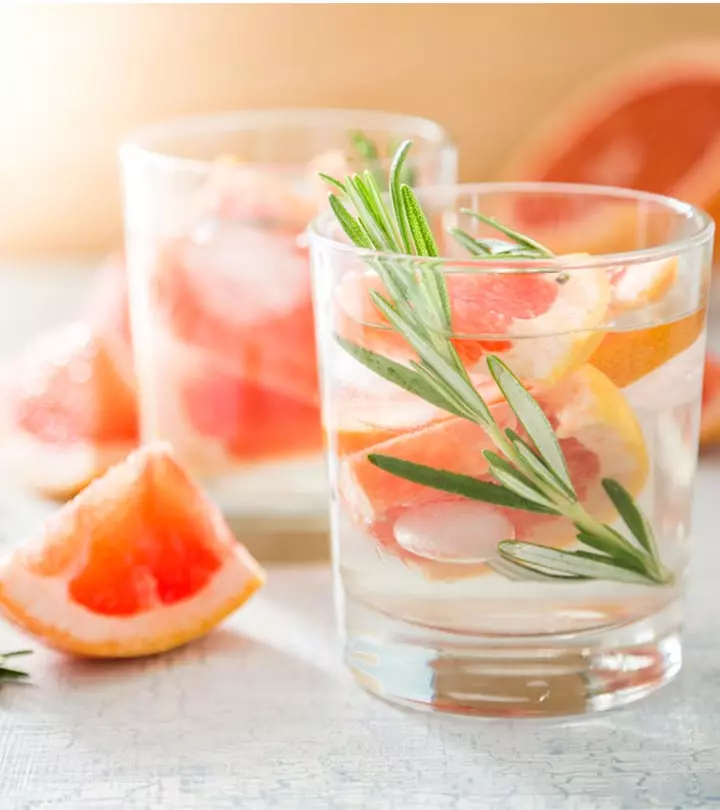
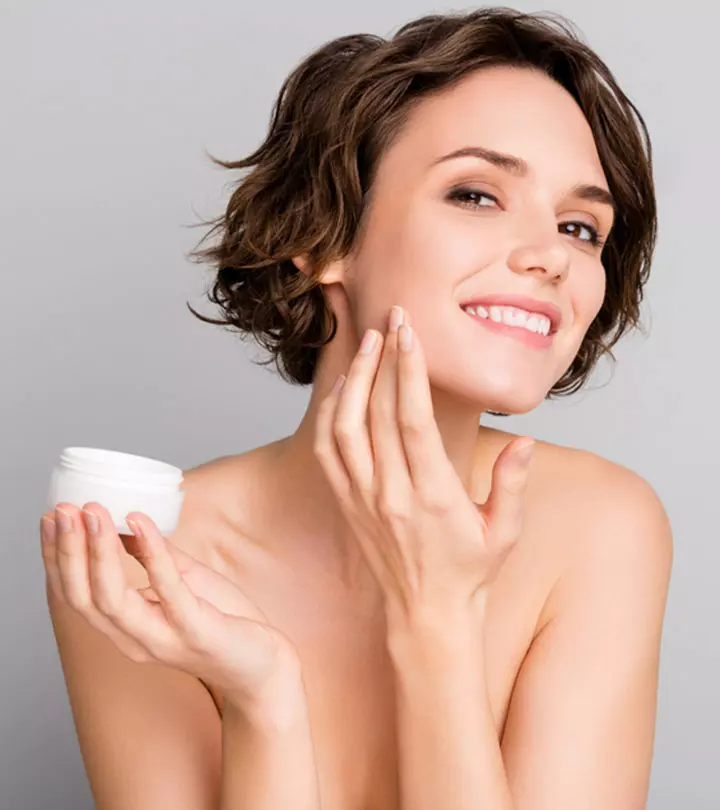
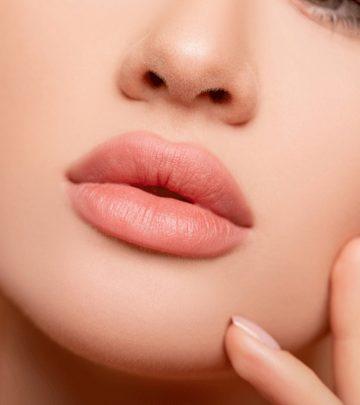
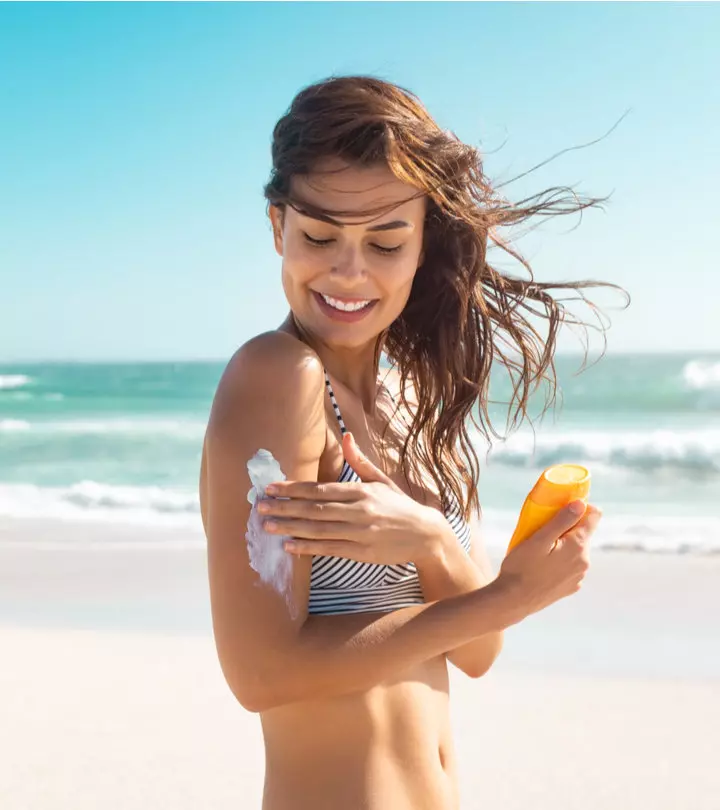

Community Experiences
Join the conversation and become a part of our empowering community! Share your stories, experiences, and insights to connect with other beauty, lifestyle, and health enthusiasts.